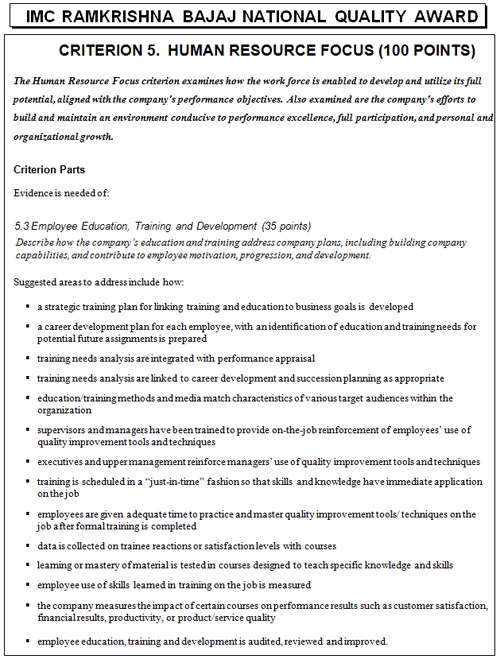Employee knowledge and skills are increasingly becoming important determinants of a company’s success. Even formerly low-tech jobs and industries have become high-tech. Today’s genset mechanics need to understand computer hardware, software, on-board diagnostics, as well as, all the old mechanical and electrical skills. I am referring to Cummins India and Caterpillar India!
Successful companies have found that their employees need to continuously upgrade their knowledge and skills to remain competitive. Because training is so important, and also so expensive, it is crucial that the company link its education and training to the key business drivers and overall goals of the company. One way of doing this is by building a strategic training plan. A strategic training plan is a method for identifying needed competencies and skills based upon long-term goals of the business. This approach begins with the business goals and works backward until specific training needs have been identified. Knowledge and skills identified in this manner are those that will help the company to meet its long-term goals.
Many organizations approach training and education by buying a series of packaged programmes from consultants who tell them what their employees need. What the Bajaj Examiners are looking for in the criterion part ‘Education and Training’ is that you conduct a systematic needs assessment to determine the specific knowledge, skills, and competencies needed by different categories of employees in your organization. A systematic needs analysis does not mean conducting a survey to ask employees which courses they would like to take. A training/education needs analysis is a process that involves an initial analysis of the functions and jobs, and then determination of the knowledge and skills needed to do the jobs and functions correctly. Group or individual interviews are conducted to identify the specific tasks employees must perform in their jobs, as well as, how quality tools and concepts can be integrated into those job tasks. The key to this process is that the knowledge and skills are derived from analyzing job tasks.
Some companies adopt the one-size-fits-all approach to quality education/training. While it is true that all employees at all levels need education on the basic concepts of quality, such as prevention versus detection, not all employees need to learn about specific tools and techniques such as facilitating team meetings or the Taguchi method of conducting experiments. Giving all employees all the same quality courses results in:
- Training not being tailored to individual needs
- Time and money being wasted on training that is irrelevant
- Job/function specific applications of the quality tools and techniques not being discussed
- Skills and knowledge learned in the classroom not being translated into changed behaviour on the job.
Finally, as with any leadership issue, a lack of systematic and planned follow-up is the number one reason why training of any sort fails in organizations. As much – or more – time and money needs to be spent on what happens after the classes, as is spent preparing and conducting the classes. In the Deming Plan-Do-Check-Act cycle, leadership emphasis should always be on ‘Plan’ and ‘Check’ for effective results.

CREDITS: Suresh Lulla, Founder & Mentor, Qimpro Consultants Pvt. Ltd.